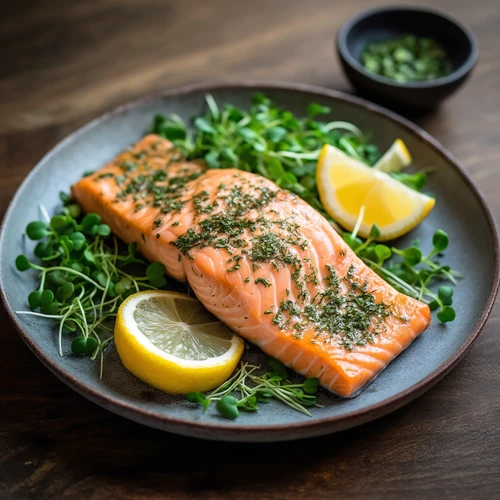Low‑sodium cooking isn’t about sacrificing flavor – it’s about maximizing the natural taste of ingredients while protecting heart health. Salmon, rich in omega‑3 fatty acids, is an ideal partner for a low‑salt menu. By replacing table salt with aromatic herbs, citrus zest, and fermented sauces that contain only trace sodium, you maintain a savory profile without the sodium overload.
Below is a complete recipe for Herb‑Citrus Salmon with Quinoa, a dish that stays under 500 mg of sodium per serving, yet delivers bold flavors. The preparation is time‑saving, and you can easily swap the quinoa for brown rice if you prefer a different grain base.
Ingredients (serves 2)- Salmon fillets – 200 g
- Quinoa – 100 g (dry weight)
- Olive oil – 10 g
- Fresh lemon zest – 5 g
- Lemon juice – 15 g
- Fresh dill, chopped – 5 g
- Fresh parsley, chopped – 5 g
- Garlic cloves, minced – 4 g
- Pea shoots – 10 g (optional garnish)
- Black pepper, cracked – 2 g
- Optional low‑sodium soy sauce – 5 ml (2 g)
Method:
- Rinse quinoa under cold water, then cook in 200 ml of water for 15 minutes. Fluff with a fork.
- In a small bowl, combine olive oil, lemon zest, lemon juice, minced garlic, dill, parsley, cracked black pepper, and if desired, the low‑sodium soy sauce. Stir until well blended.
- Place salmon fillets in a baking dish and brush the herb‑citrus mixture evenly over each side. Let marinate for 10 minutes at room temperature.
- Bake at 180 °C for 12–15 minutes, or until the salmon flakes easily with a fork. The internal temperature should reach 63 °C.
- Serve the salmon atop the quinoa, garnished with pea shoots for a pop of color and a subtle earthy note.
By cutting out added salt and using pure flavoring agents, this recipe keeps the sodium content minimal while highlighting salmon’s innate richness. The combination of lemon and herbs also promotes digestion and helps reduce bloating, making the dish a winner for anyone watching their sodium intake.
Pro Tips for Low‑Salt Cooking with Salmon:
- Replace salt in marinades with spices like smoked paprika, cumin, or coriander.
- Use natural umami boosters such as mushrooms, tomatoes, or a splash of vinegar.
- When shopping, choose fresh or frozen salmon with no added sauces or brine.
- Finish dishes with a squeeze of fresh citrus to brighten flavors without sodium.
- Opt for low‑sodium condiments – many brands now offer versions with 50 % fewer sodium.
Whether you’re aiming for a heart‑healthy dinner or simply looking to diversify your culinary repertoire, low‑sodium salmon proves that restraint and taste can live side by side. Try the recipe above, adapt the seasoning palette to your taste, and enjoy a flavorful meal that supports your long‑term health goals.


